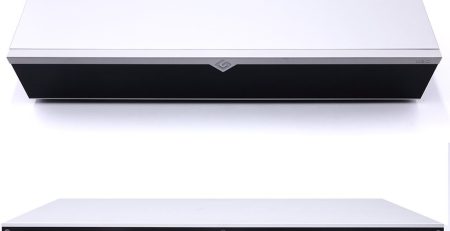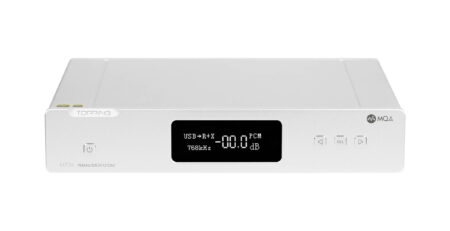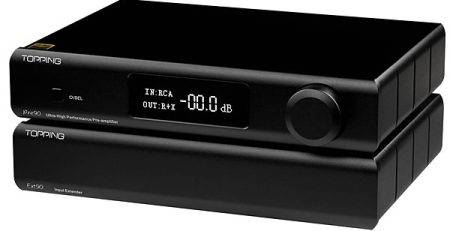WiiM Amp Streaming Amplifier Review
I was pleasantly surprised by the good bit of weight this small box has. It will help it not slide with the weight of the speaker wires and such. Back panel shows the differentiation from a regular amplifier:
With included streaming, you have a one box solution to play your content over the network. You can use the included Bluetooth remote or the application. The latter was rock solid which is more than I can say about some other (major) streaming amplifiers. It instantly found the device, upgraded its firmware and allowed reliable control of all function. I can’t do justice to all of its capabilities in this performance related review but suffice it to say, it is very capable.
HDMI ARC allows a smart TV to feed the amplifier signal for content you play internally to your TV. A nice quality HDMI cable was provided (in addition to Toslink and even RCA) which was appreciated.
The only complaint I have is with similar looking subwoofer out. Looking from above, I thought that was the other input channel and spent good bit of time trying to figure out why I was only getting sound out of one channel. Having it be located elsewhere would help as opposed to being lined up with the left audio input channel.
Another nit is the rotary volume control not always acting on the volume. You would have to go two notches for example to change volume.
This review has taken a while to get out. The first sample I received performed well in most of the tests but showed quite an increase in distortion at lower frequencies. This manifested in Multitone test and power vs frequency sweeps. I ran the results by the company and they said this was an early production problem that was fixed. They sent me a new one which almost remedied that problem.
WiiM Amp Amplifier Review
With access to AP’s APx516 analyzer, I was able to test the HDMI ARC on WiiM Amp:
This puts the amplifier comfortable above our average of all amplifiers tested:
For streaming, I wanted to use Roon but seems that is not there yet. Fortunately Chromecast is there which provides similar high performance streaming:
So no difference with respect to which digital input you use. Analog streaming in the first sample I tested was a bit worse with SINAD of 85 dB. The new sample degraded some with low frequency noise down to 80 dB (not shown). I assume this is not material to most users where analog input is only used for LP and such.
Cycling through inputs, here is dynamic range using Toslink:
Frequency response unfortunately shows the typical load dependency in lower cost class D amplifiers:
Here is the sub out:
As noted, multitone shows good performance now:
19 and 20 kHz intermodulation test shows the increased distortion there:
Crosstalk wasn’t that great with analog input (inset) but very nice with digital:
Normally I sweep power with analog input but since digital is much better, I used that: [edit: “8 ohm” label is wrong in the first graph, should say 4 ohm).
Unless you use analog input, the gain settings is designed such that you never clip. This means that the “peak” power is the same as what I have measured above. Spec is 120 watts at 4 ohm and we are achieving that so no issue there. Same with 60 watt specified for 8 ohm.
Here is power sweep at different frequencies:
The graphs are well behaved for a class D amplifier. 20 Hz distortion though, rises good bit (dashed yellow).
Finally, the amplifier is stable on power up:
Conclusions
The WiiM Amp is a very well executed streaming, multi-room amplifier. It easily plays against big boys of streaming despite lacking their name recognition. Objective performance is very good for the class. The only wish is post output filter feedback to eliminate low dependency of the frequency response.
I am going to put the WiiM Amp amplifier on my recommended list.











